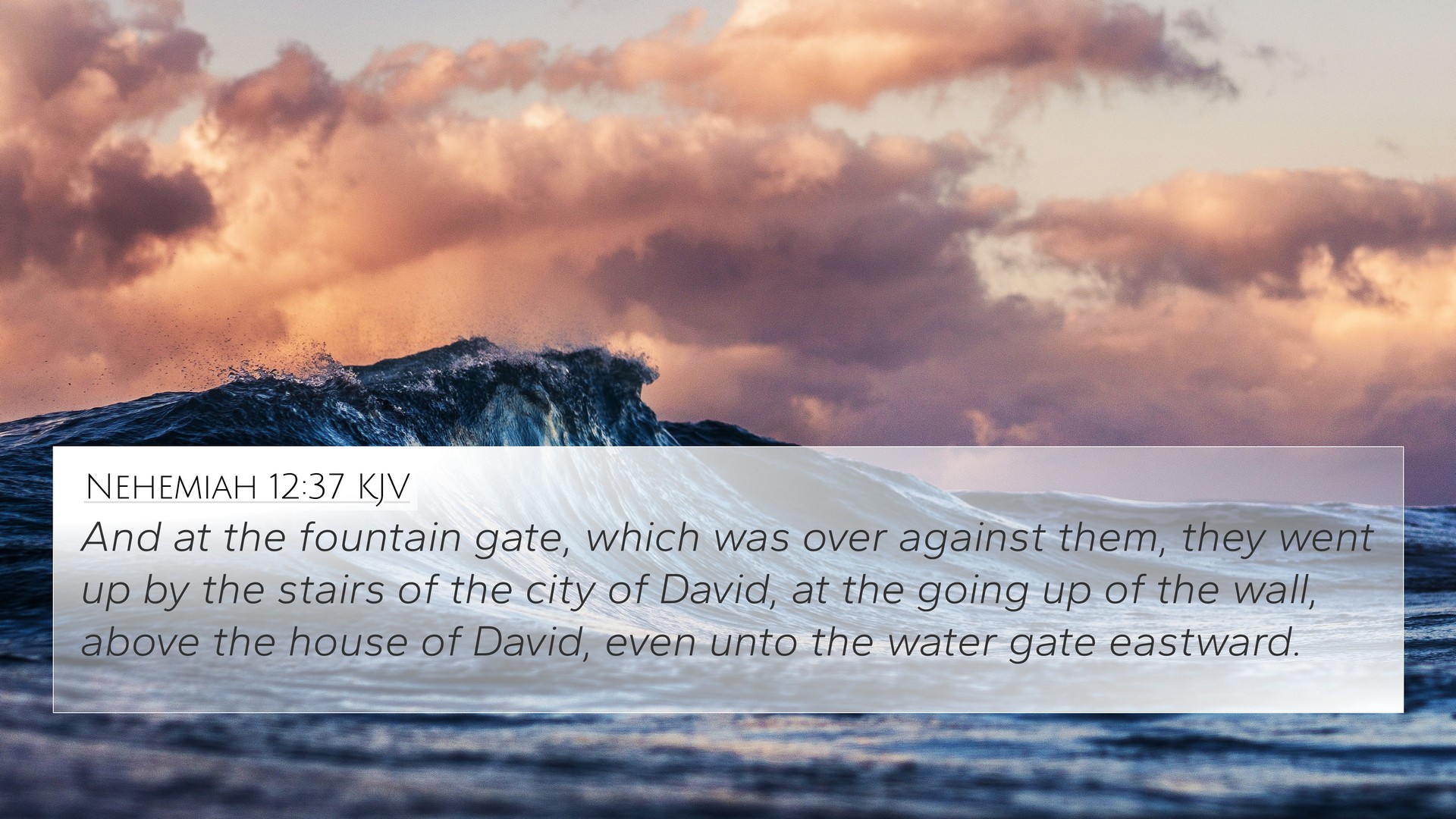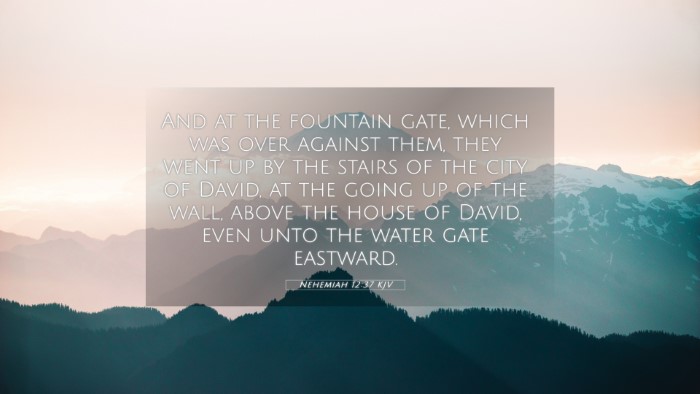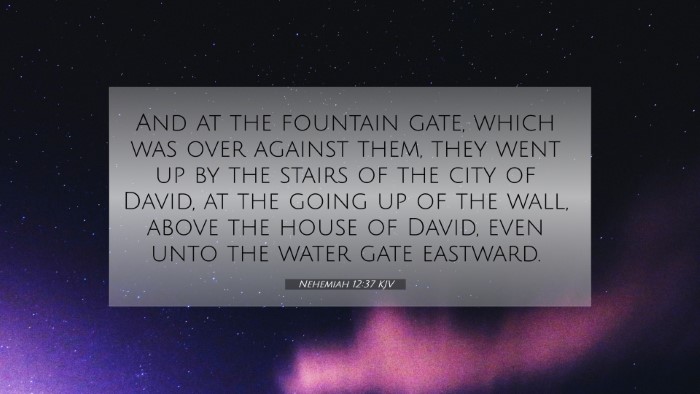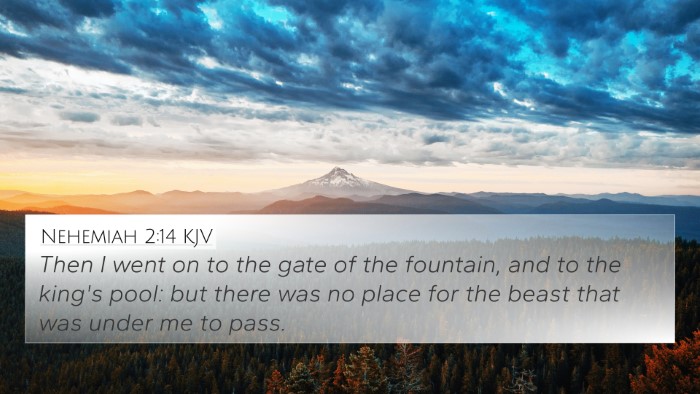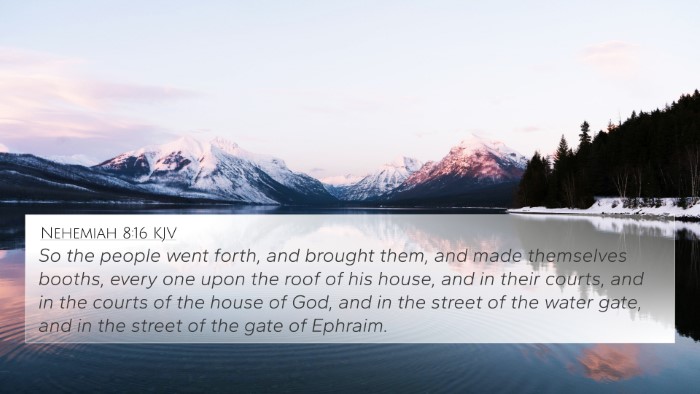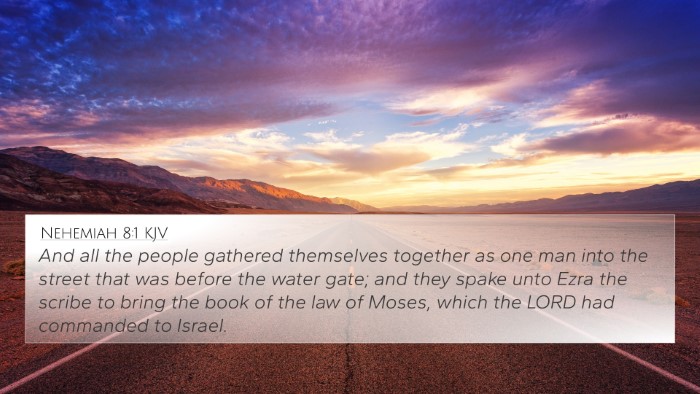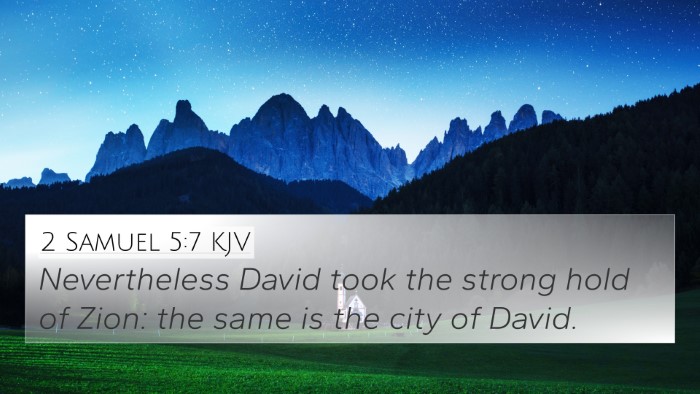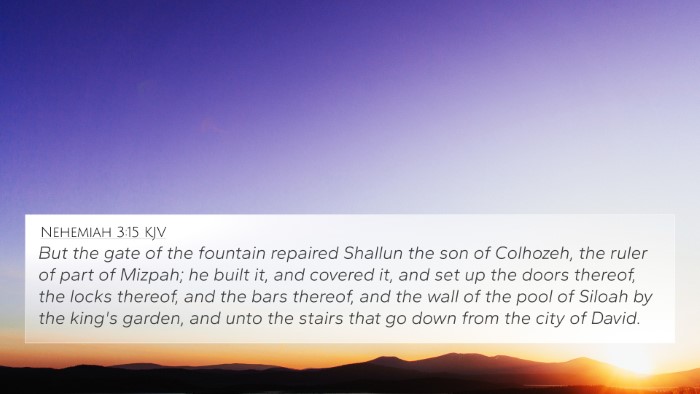Understanding Nehemiah 12:37: A Comprehensive Analysis
Nehemiah 12:37 reads, “And at the fountain gate, which was over against them, they went up by the stairs of the city of David, at the going up of the wall above the house of David, even unto the water gate eastward.” This verse describes a significant moment in the Rebuilding of Jerusalem as the people return to the city and establish their worship.
Contextual Background
The historical context of Nehemiah's efforts underscores the brokenness and subsequent restoration of the Jewish community after exile. The city walls and gates of Jerusalem symbolize both physical and spiritual fortitude. As we delve into the meaning of Nehemiah 12:37, insights drawn from public domain commentaries provide clarity.
Insights from Matthew Henry
Matthew Henry emphasizes the importance of the gates in Jerusalem as both literal and metaphorical entrances to worship. He highlights the “fountain gate” as symbolic of spiritual renewal and the refreshing nature of God’s presence. This gate, associated with the cleansing and offering of sacrifices, reflects the Israelites’ restored relationship with God after a period of desolation.
Albert Barnes' Commentary
Albert Barnes elaborates on the geographical significance in Nehemiah 12:37, detailing how the physical ascent symbolizes a spiritual journey. He notes the reference to the “city of David” to connect the reader with the lineage and promises made to David regarding the eternal kingship. This connects the heritage of worship to the historical foundation upon which Jerusalem stands.
Adam Clarke's Insights
Adam Clarke offers an in-depth analysis of the gates mentioned, particularly tracing the architectural significance of the water gate. The water gate symbolizes spiritual sustenance through the Word of God. Clarke's commentary suggests that the movement through these gates denotes the transition of the people returning to their worship origins, persevering through adversity, and looking ahead to a future restored by God's grace.
Thematic Connections
Nehemiah 12:37 serves as a pivotal point signifying both communal effort and individual faith. It echoes themes prevalent throughout scripture, linking various Biblical texts:
- John 7:37-39: Jesus speaks of the living water, correlating with the fountain concept in Nehemiah.
- Isaiah 12:3: "With joy you will draw water from the wells of salvation," reinforcing the notion of spiritual refreshment.
- Psalms 46:4: A river whose streams make glad the city of God aligns with the water imagery in Nehemiah.
- Revelation 22:1: The river of the water of life that flows from the throne of God connects to the eternal symbolism of the fountain.
- Hebrews 12:22-24: Describes coming to Mount Zion, linking with the city of David concept.
- Ezekiel 47:1-12: Vision of the waters flowing from the temple mirrors the renewal theme in Nehemiah.
- Matthew 5:14: The city set on a hill relates to the prominence of Jerusalem as described in Nehemiah.
Cross-Referencing Biblical Texts
The process of cross-referencing Biblical texts unveils the intricate web of connections woven through scripture. Such links enhance understanding and appreciation of the verse's significance. Tools for Bible cross-referencing, like concordances and reference resources, can aid in identifying these connections. Nehemiah’s role in restoration symbolizes the fulfillment of God's promises through historical narratives, which resonates in themes across the Bible.
Tools and Methods for Cross-Referencing
- Bible Concordance: Essential for finding specific words and themes.
- Bible Cross-Reference Guide: Provides systematic connections between verses.
- Cross-Reference Bible Study: Helps individuals explore thematic links.
- Comprehensive Bible Cross-Reference Materials: Useful for in-depth studies.
Conclusion
In conclusion, Nehemiah 12:37 serves as a vital verse illustrating the return to worship and the reestablishment of the community of faith. The connections made through cross-referencing enhance our understanding of not only Nehemiah's actions but also the broader narrative of redemption within scripture. By comparing these verses, a more profound grasp of God’s continual presence and the importance of community in faith emerges.
